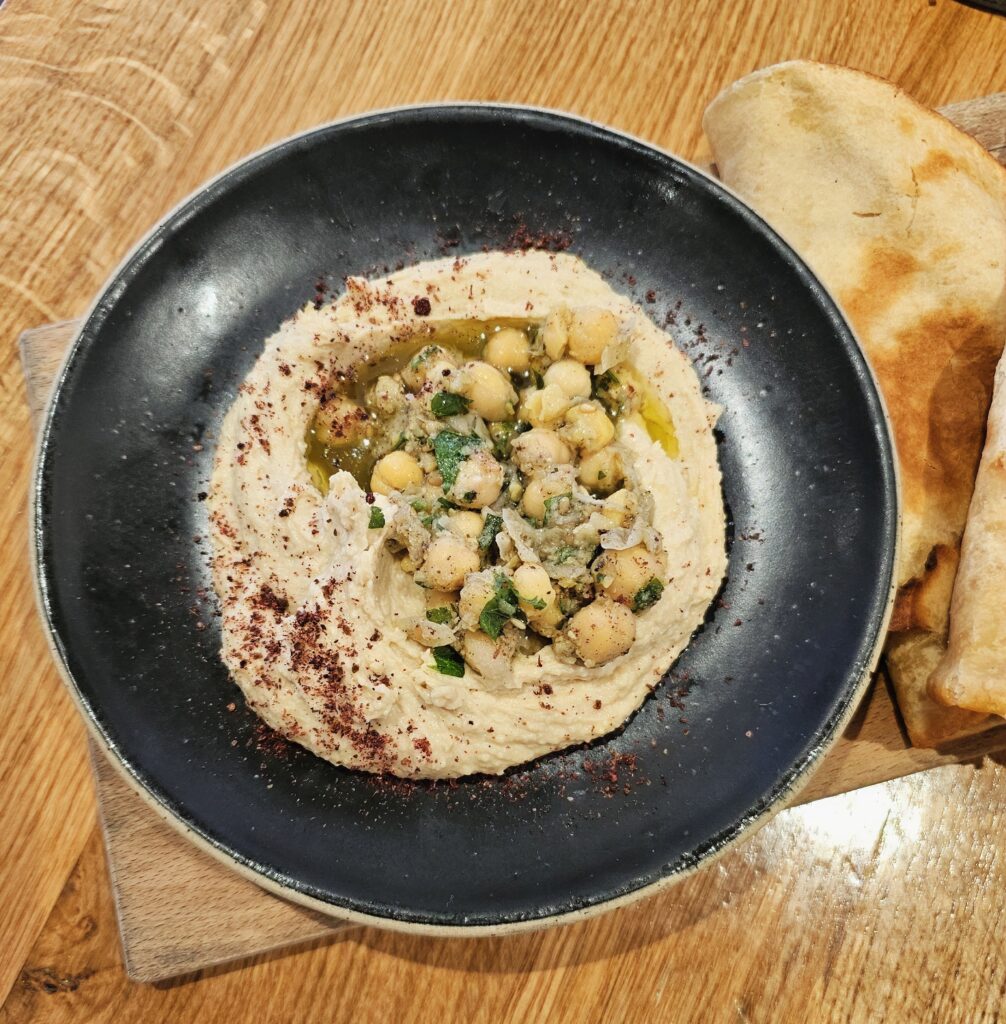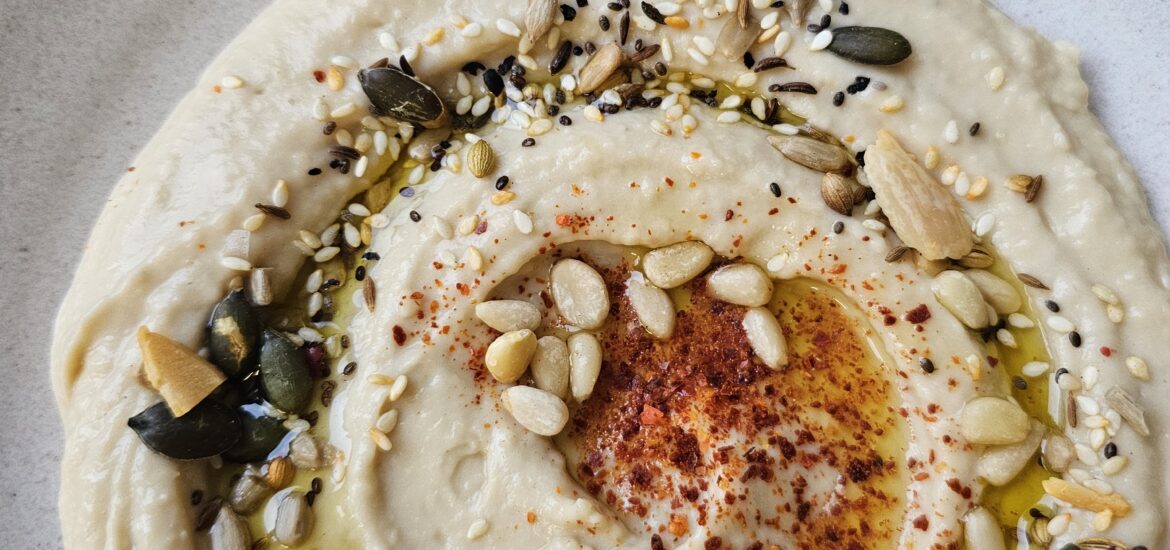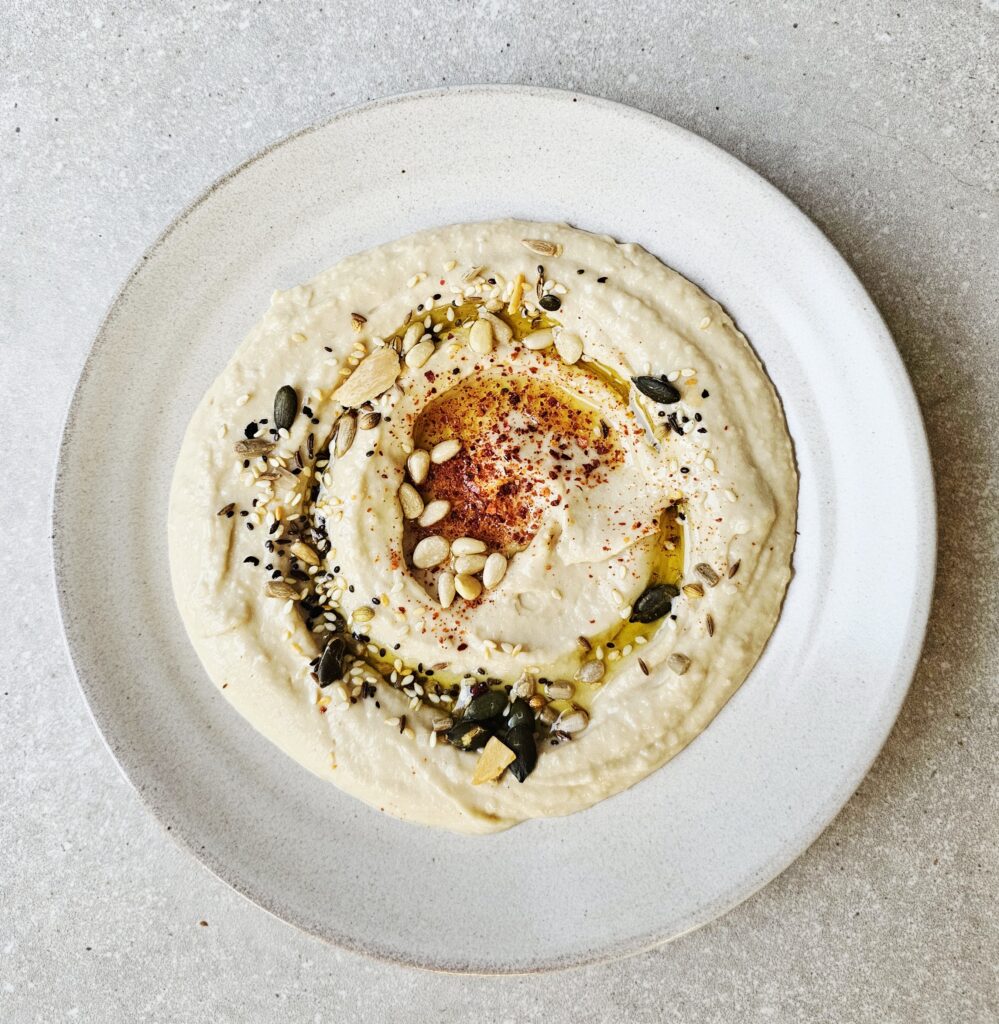
It is very easy to pick up a tub of hummus from any supermarket, but equally easy to make it at home. I used to make hummus by first soaking then boiling dried chickpeas. That I have not done so for many years made me realise I no longer find it meaningful to spend time waiting for beans to boil.
But our family all still like hummus.
I have to mention this cookbook again. FERMENT, by Kenji Morimoto (published by One Boat, ISBN 978-1035053742), is part instruction and part recipe book. If you don’t want to make your own kimchi, miso, pickles, kombucha or cheong (one part sugar to one part fruit), you can use ready made versions of these items and cook from the given recipes.
The recipe for miso hummus (page 172) is served with thinly sliced fried courgettes and pine nuts. Pan-frying courgettes may also be a step too far when rushing to get something on the table. However, I simplified this step by cooking the courgettes in the oven. I also added a few cloves of confit garlic as I like garlic.
I made the hummus twice, once using canned butterbeans and once using bottled butterbeans. Here is a review on the difference in taste and texture between the two. Both hummus were lovely but the one made with the bottled beans was so silky smooth it could have almost been a sauce to accompany e.g. a plate of chargrilled vegetables or a piece of pan-fried fish fillet.
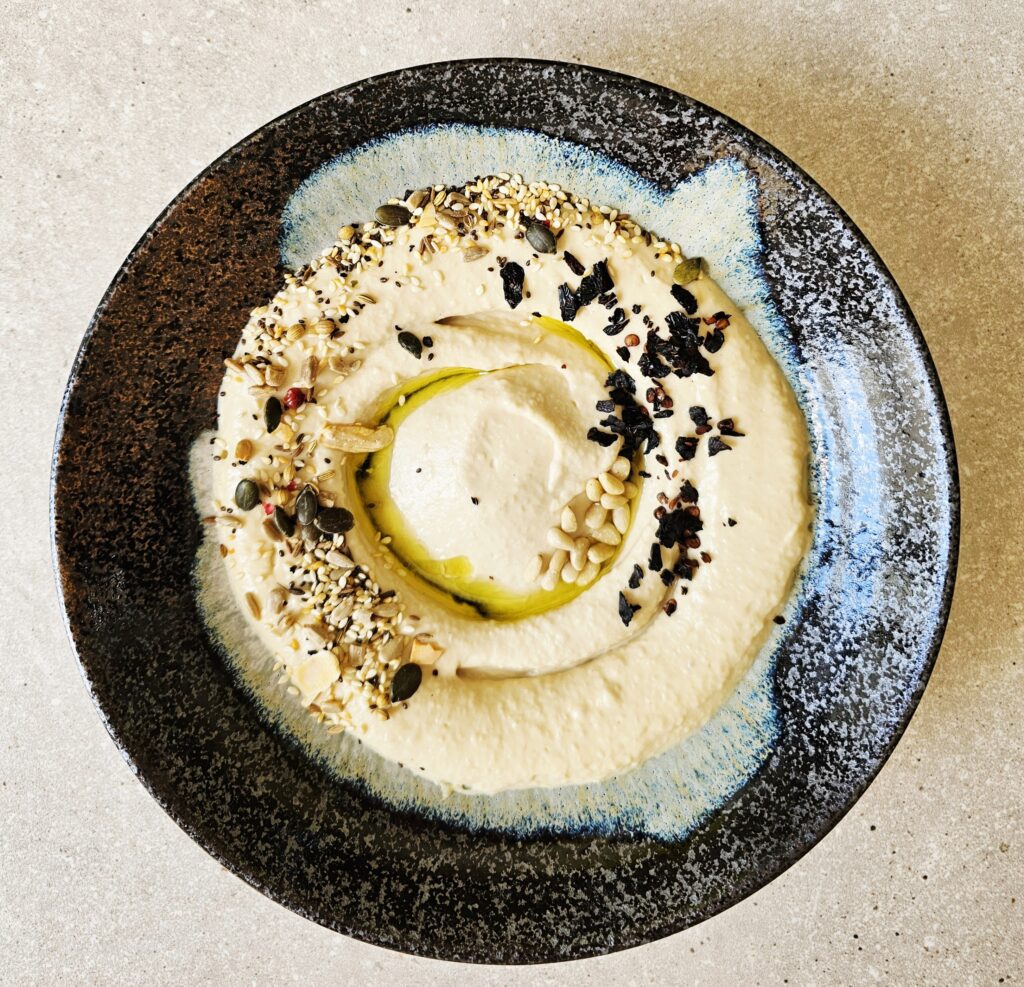
Whether to use canned or bottled beans would be down to cost. A cursory look at prices on the online supermarket Ocado show that ready-cooked butter beans cost from 12 pence per 100 g (canned, Ocado own label) to £1.32 per 100 g (bottled, organic). As I quite like a bit of texture to hummus, I will probably stick to canned beans in future.
My first port of call with most things Middle Eastern is my Ottolenghi cookbooks. Their recipe for Basic Hummus is at the end of the post.
For serving butterbeans on its own, whole, I would use the softer bottled variety
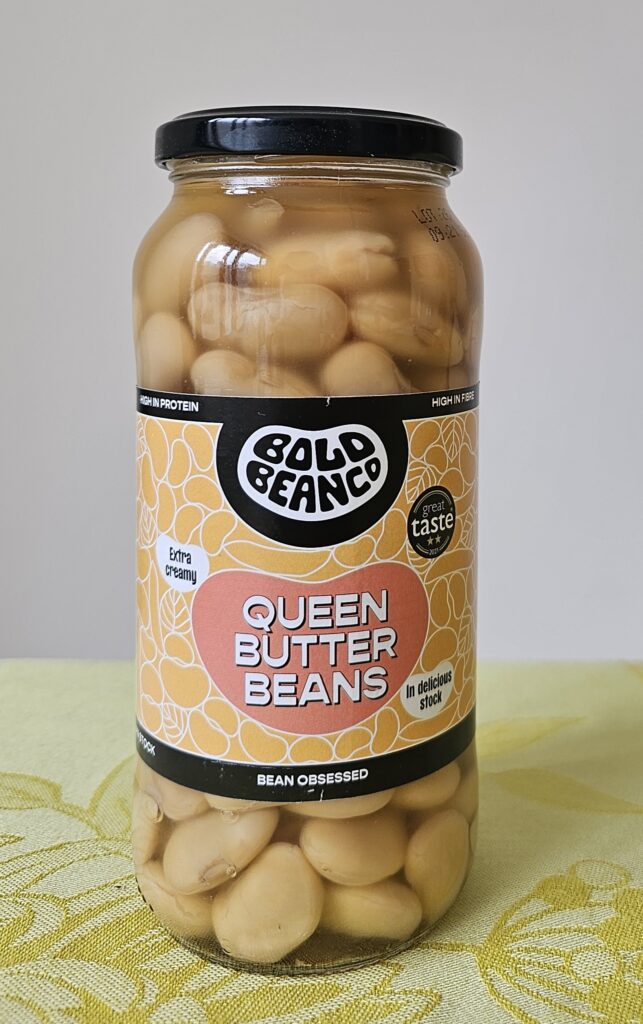
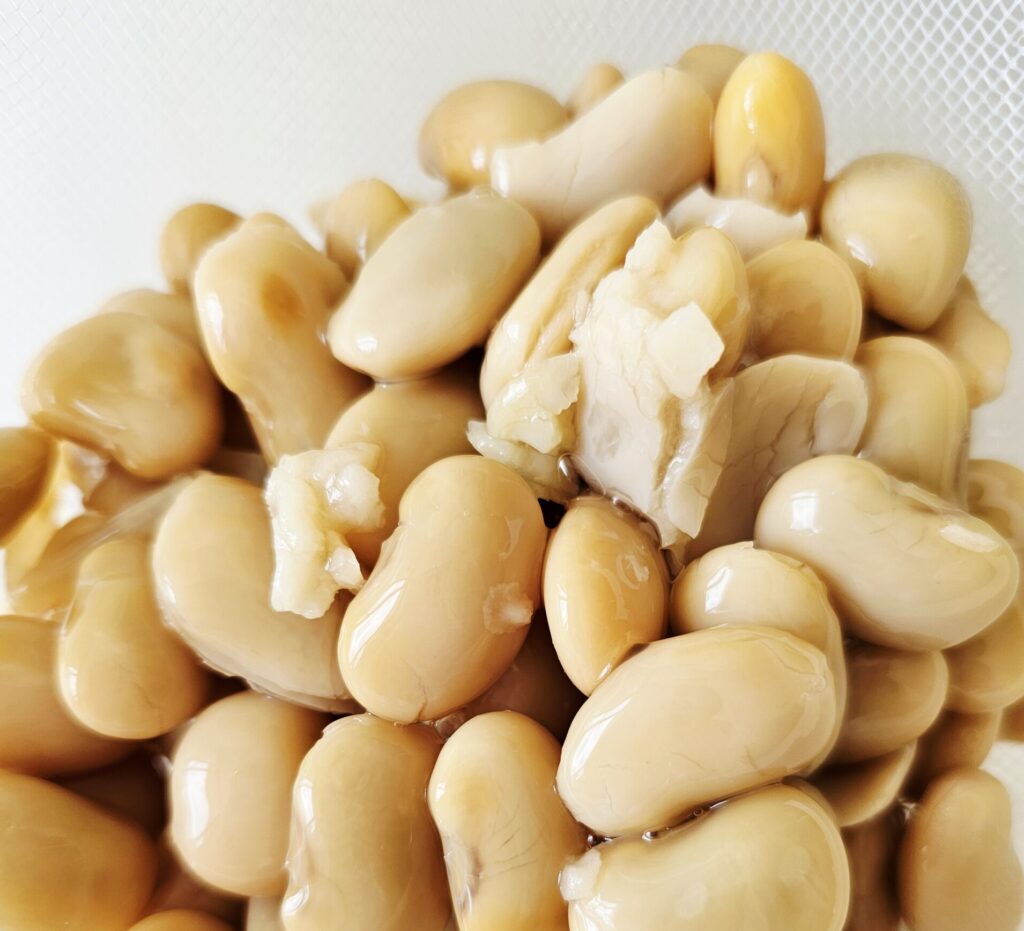
For the Hummus:
500 g cooked butter beans
3 tablespoons tahini
2 tablespoons red miso
zest of 1 lemon
2 tablespoons lemon juice
4 large cloves garlic
100 g olive oil
4 -5 ice cubes (a handful)
Chilli flakes and dukkah (see below), for serving
How to Make:
Place the garlic and olive oil in a small saucepan. Cook over a low heat until the garlic has softened, without taking on much colour. Leave to cool before proceeding as below.
In a food processor, place the butter beans, tahini, miso, lemon zest, lemon juice and the ice cubes. Add the garlic and oil.
Blitz everything for around 45 seconds on high speed. Give the hummus a stir, then blitz again for around 30 seconds. The ice will get crushed in the process and turn to water which will loosen the texture of the hummus. Continue to blitz 1 – 2 more times if any ice remains.
Taste for seasoning and adjust to your taste. I found that it was not necessary to add salt as the beans and miso were salty enough.
To serve, place the hummus on one or two round serving plates. Make a swirl in the centre with a large spoon. Drizzle over some olive oil, and sprinkle over some dukkah (see below) and dried chilli flakes.
Serve with crackers, vegetable crudités or grilled pitta bread.
Dukkah:
I bought my dukkah from Honey and Spice, part of Honey & Co (52 Warren Street, Fitzrovia, W1T 5NJ). Should you wish to make your own, the ingredients are: flaked almonds, pumpkin seeds, sunflower seeds, sesame seeds, chia seeds, pink peppercorns, fennel, cumin, coriander, caraway, urfa chilli, salt. Recipe here.
I have also used the dukkah from Ottolenghi previously. Should you wish to make your own, the ingredients are: hazelnuts, sunflower seeds, fennel seeds, cumin seeds, coriander seeds, sesame seeds, nigella seeds, salt, black pepper, sweet paprika. Recipe here.
Plating and serving the hummus (I made two identical plates)
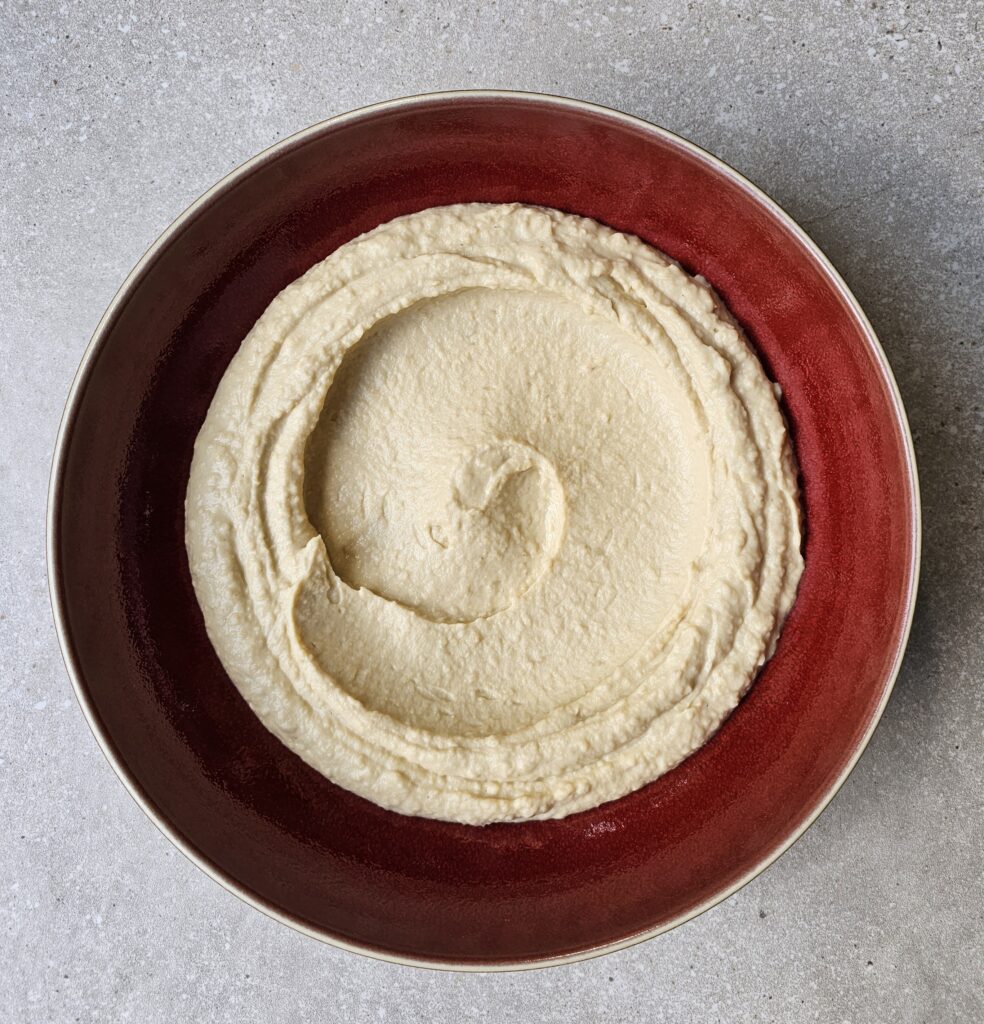
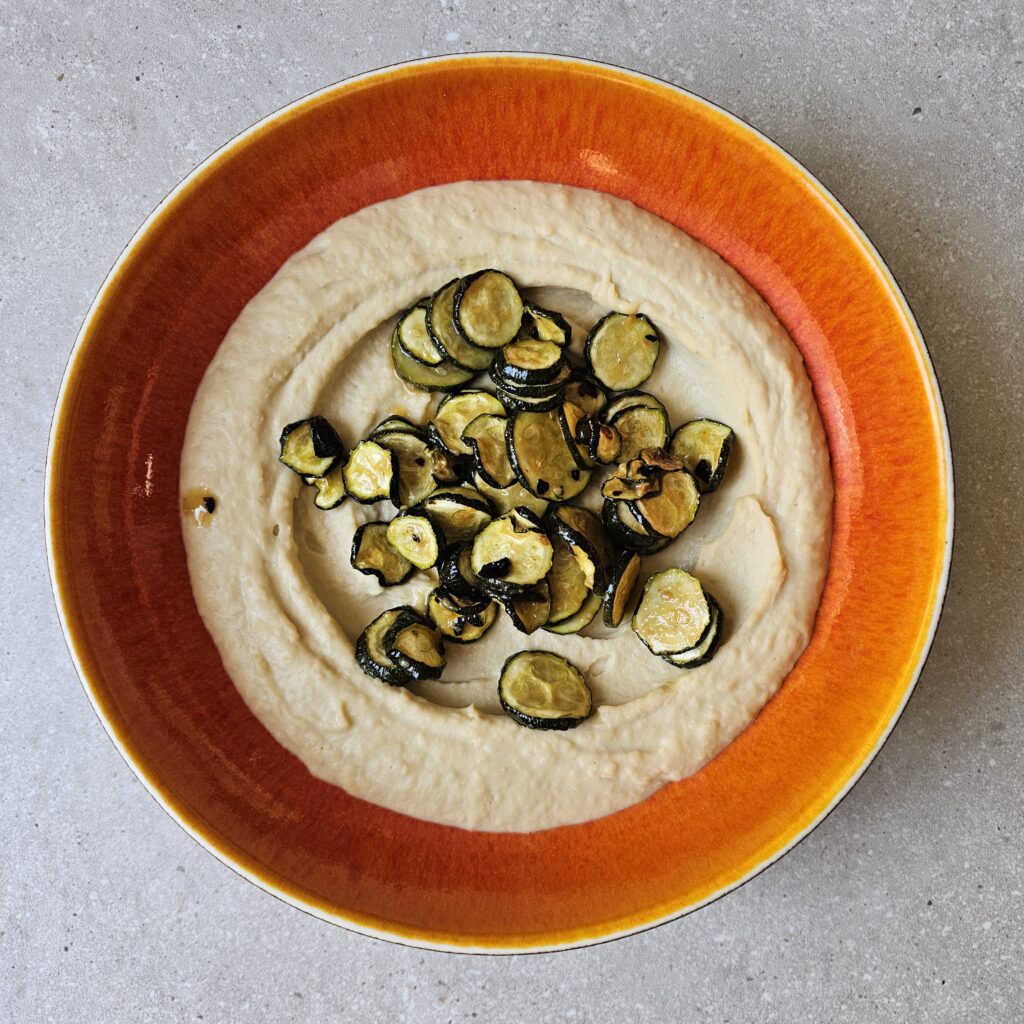
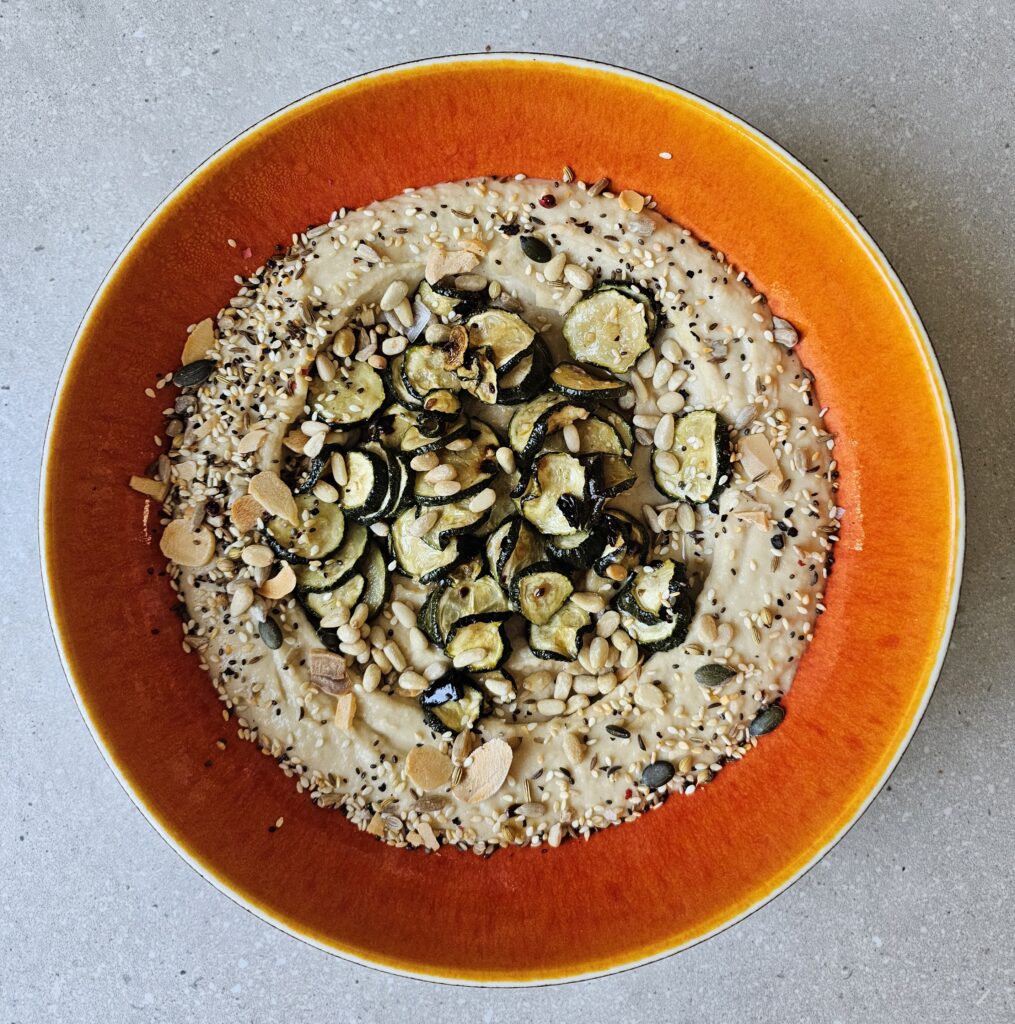
Ottolenghi’s Basic Hummus is from Jerusalem by Yotam Ottolenghi and Sami Tamimi, published by Ebury Press, ISBN 978-0008503970.
The recipe calls for soaking and cooking dried chickpeas, but I am recommending that you stay sane by opening 2 – 3 cans of cooked chickpeas. Use bottled chickpeas if you prefer a smoother, silkier hummus.
Place 600 g cooked chickpeas in a food processor bowl and process until you get a stiff paste.
With the machine still running, add:
270g light tahini paste
4 tablespoons lemon juice
4 crushed cloves garlic
1½ teaspoons of salt
Finally, slowly drizzle in the iced water and allow it to mix until you get a very smooth and creamy paste, about 5 minutes.
Transfer the hummus into a bowl, cover the surface with cling film and let it rest for at least 30 minutes. If not using straight away, refrigerate until needed. Make sure to take it out of the fridge at least 30 minutes before serving.
I had some of this hummus (chickpea) with flatbread at a branch of Ottolenghi over the weekend. It was very nice and I would make this at home, using tinned chickpeas. I might also try to make some flatbread to go with it.
